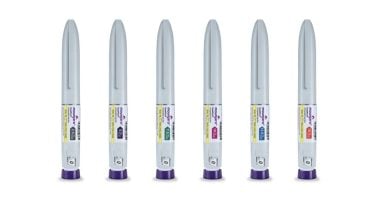Lucentis is the trade name of the drug Ranibizumab, which can be useful for people with diabetes who are losing their sight from diabetic macular oedema (DMO) or ‘wet’ age related macular degeneration (ARMD).
Macular oedema, a common complication of diabetes, occurs when fluid and protein deposits collect on or under the macula of the eye, which is in the centre of the retina. This causes it to thicken and swell resulting with the distortion of a person’s central vision.
It often develops as a result of diabetic retinopathy.
NICE Approval
In 2011 the National Institute for Clinical Excellence (NICE) decided not to recommend the drug for treatment of diabetic macular oedema due largely to the high costs associated with the drug
But in January 2013, the health watchdog overturned its ruling and following an agreement by the manufacturer Novartis to lower the price of the drug to the NHS. As a result, Lucentis is now available on the NHS as a form of treatment for patients with impaired vision caused by DMO.
How does Lucentis work?
Lucentis is given in the form of an injection which can be administered monthly or three times a month.
The medicine helps to prevent new blood vessels growing, which can therefore help combat the development of wet ARMD and macular oedema and allow the eye to heal itself to some extent.
In clinical trials, the drug was shown to have “superior” clinical effectiveness over Fergus, which is currently the first line of treatment for patients with DMO.
How much does it cost?
As it stands, it costs around £1,000 a shot and a number of treatments may be needed, particularly for the treatment of diabetic macular oedema.
Is there an alternative drug?
Avasti, trade name of the drug bevacizumab, is a drug that has helped to treat cancers. It works in a similar way as Lucentis in that it helps to inhibit the growth of new blood vessels. Avastin is notably cheaper than Lucentis, but the drug has yet to be tested enough to be approved for use against diabetic madular oedema.
A complication is that both Avastin and Lucentis are made by Novartis. With Lucentis bringing higher profits, Novartis has no financial incentive to spend money licensing Avastin for use in DMO.
Lucentis is a recombinant humanised IgG1 kappa isotype monoclonal antibody fragment that is designed for intraocular administration. It is designed to inhibit macular angiogenesis which is the growth of new blood vessels in the eye that can rupture and cause vision loss.
It is specifically designed for the treatment of neovascular age-relate degeneration (AMD) and is administered in the form of an injection which can be monthly or three monthly.
It is potentially useful for people suffering from that condition but also diabetics who are losing their sight from macular edema. Macular edema occurs when fluid and protein deposits collect on or under the macula of the eye, which is in the centre of the retina. This causes it to thicken and swell resulting with the distortion of a person’s central vision.
What are the side effects?
A number of side effects that could be associated with Lucentis include:
- Eye pain
- Redness or blood spots in the white of the eye
- Specks or floaters in the vision
- Cataracts
- Increased pressure in the eye
- Sensation of a presence in the eye
- Blurred vision
- Headache
- Bronchitis
Debate about cost efficiency of Lucentis
As it stands an appeal has been launched about the Lucentis drug as its competitor is Avastin which is created by the same company. Avastin is quite reasonable at the small doses required for off-label eye-care treatment as well the fact it’s cheaper at £10-30 per injection.
The trouble is that The National Institute for Health and Clinical Excellence (NICE) have proposed that Lucentis should not be launched due to concerns over its cost effectiveness.
Lucentis itself is a fragment of Avastin with modifications that the manufacturer Genentech says makes it more suitable for the eyes but at a higher cost and with more injections required.
The pricier Lucentis would be for conditions such as diabetic macular oedema but without approval, this will not be available to diabetic patients.
Steve Winyard, RNIB Head of Policy and Campaigns said: “NICE has failed to consult with experts from patient organisations on this new evidence, nor have they sought advice from clinicians who treat people with this condition. We strongly believe that some of the assumptions they have made about the cost-effectiveness of the treatment are wrong.”
The debate continues but diabetic patients are offering their support to get the product released.
Latest news on Lucentis
In October 2011, charity Diabetes UK is launched an appeal against NICE’s recommendation against use of Lucentis to treat diabetic macular oedema.







